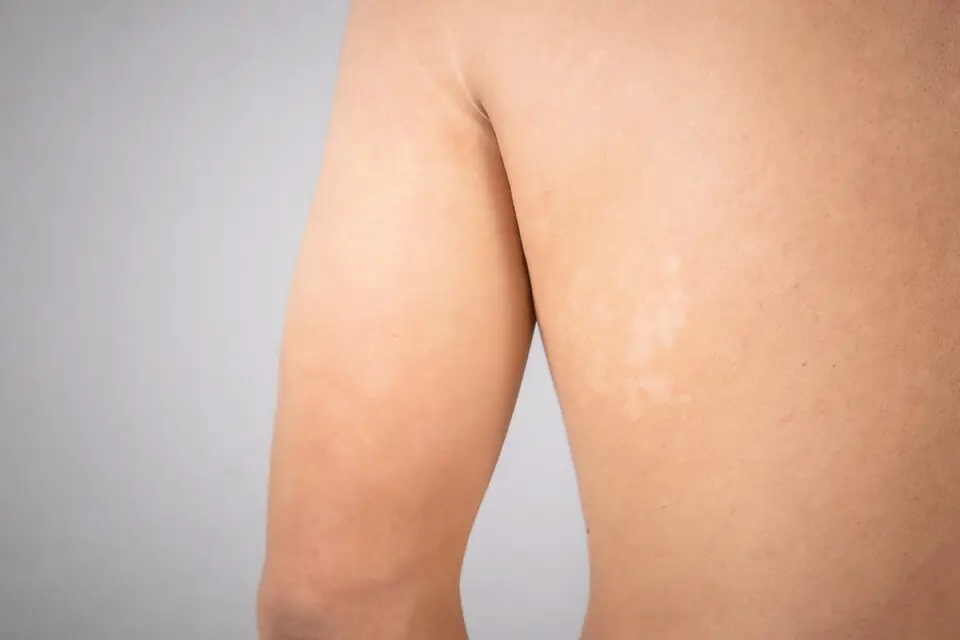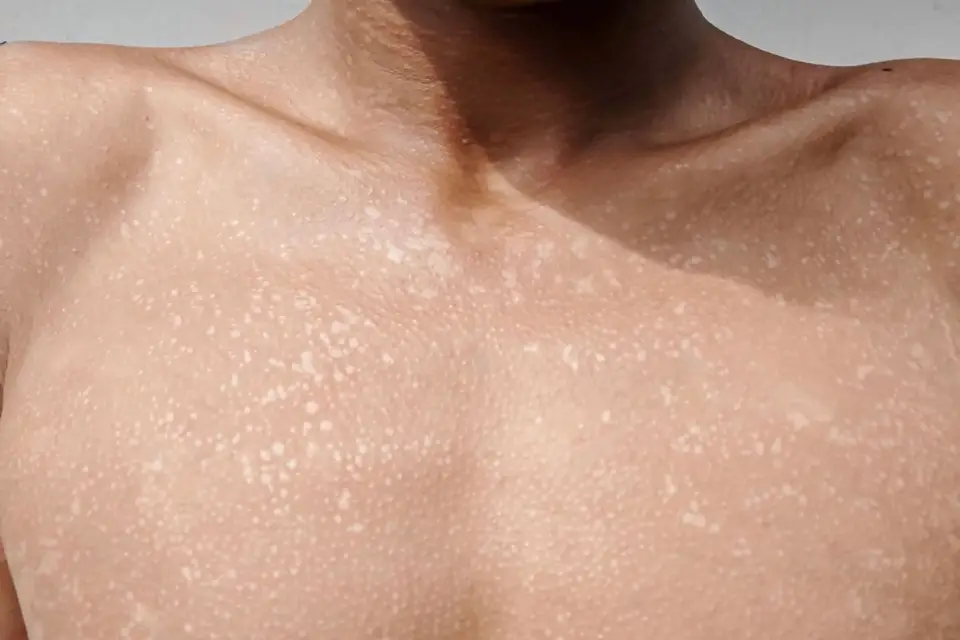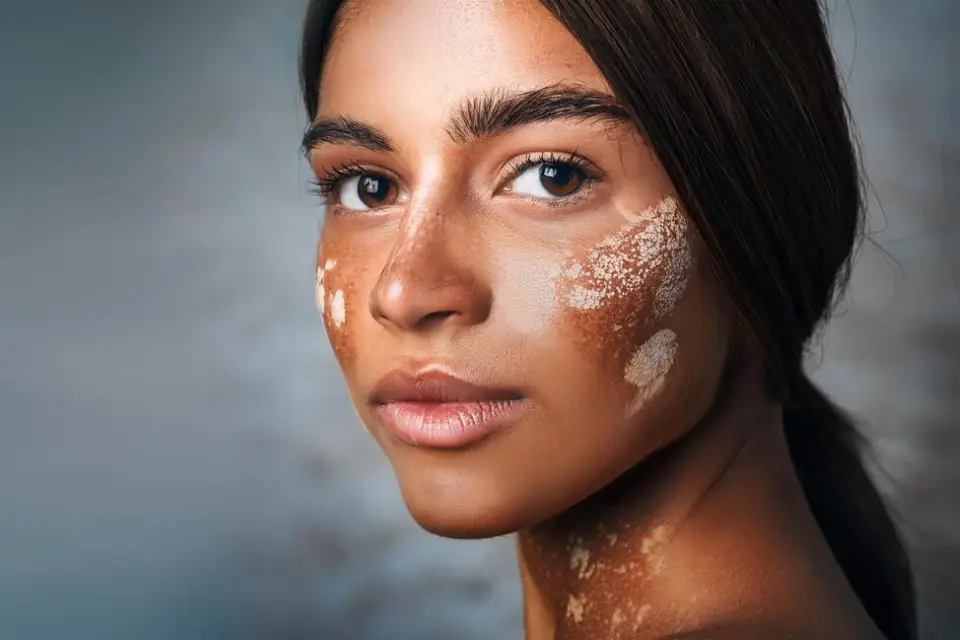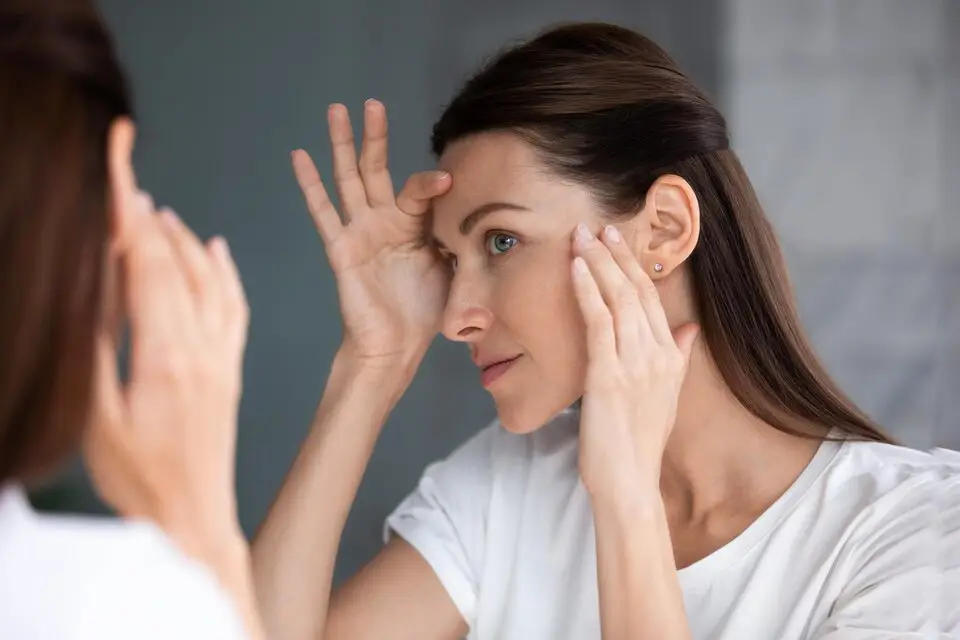- Introduction
- Overview of Vitamin Deficiency: Small White Spots on Skin – Causes & Treatment
- Understanding Small White Spots on Skin
- Common Causes of Small White Spots on Skin
- How Vitamin Deficiency Causes White Spots
- Symptoms of Vitamin Deficiencies Leading to Skin Problems
- Other Nutritional Deficiencies That Affect Skin
- Diagnosing the Cause of White Spots
- Treatment Options for Vitamin Deficiency-Related White Spots
- Home Remedies for White Spots on Skin
- Prevention Strategies
- Foods That Help Restore Vitamin Balance
- Lifestyle Changes to Prevent Skin Conditions
- Medical Interventions for Persistent White Spots
- Conclusion
- Frequently Asked Questions (FAQs)
- Additional Resources
Introduction
Have you ever noticed small white spots on your skin and wondered what caused them? Believe it or not, your diet might be playing a bigger role in your skin health than you think! Nutrition is the backbone of many bodily functions, and the skin, our largest organ, is no exception. When we’re deficient in certain vitamins, it can manifest in various skin conditions, including these puzzling white spots.
In this article, we’ll dive deep into the causes and treatments of small white spots on the skin, particularly focusing on vitamin deficiencies.
Overview of Vitamin Deficiency: Small White Spots on Skin – Causes & Treatment
Understanding the connection between vitamin deficiency and small white spots on the skin is essential for effective treatment. This overview table highlights key information for quick reference as you continue exploring the article.
Overview Table:
| Aspect | Details |
|---|---|
| Definition | Small white spots (hypopigmentation) on the skin that may signal underlying issues. |
| Common Causes | Vitamin deficiencies, fungal infections, sun damage, skin conditions like vitiligo. |
| Key Vitamins Involved | Vitamin D, B12, E; zinc and calcium deficiencies also play a role. |
| Symptoms of Deficiency | Dry, flaky skin, redness, slow healing, uneven skin tone, white spots. |
| Nutritional Sources | Vitamin D: fatty fish, fortified foods; B12: eggs, meat; E: nuts, seeds, leafy greens. |
| Diagnosis Methods | Dermatological evaluation, blood tests for vitamin levels, skin biopsy or patch testing. |
| Treatment Options | Dietary changes, vitamin supplements, topical treatments, home remedies. |
| Home Remedies | Aloe vera, coconut oil, apple cider vinegar for soothing and nourishing the skin. |
| Prevention Strategies | Balanced diet, sun protection, hydration, skincare routine. |
| Foods for Restoration | Foods rich in Vitamin D, B12, E, and zinc. |
| Lifestyle Changes | Proper hydration, stress management, and avoiding harmful sun exposure. |
| Medical Interventions | Prescription creams, laser therapy, and phototherapy for persistent cases. |
Vitamin deficiencies can manifest in various ways, with small white spots on the skin being a common indicator. Identifying the causes and treatments helps restore skin health effectively and promptly. By exploring the links between vitamin deficiencies and skin health, you can take proactive steps toward prevention and treatment, ensuring vibrant and healthy skin.
Understanding Small White Spots on Skin
What Are These White Spots?
Small white spots, often referred to as hypopigmentation, are patches of skin that have lost pigment or melanin, causing the skin to appear lighter than the surrounding areas. While these spots are typically harmless, they can be frustrating, especially if they appear in visible areas like the face or arms.
Are They Always a Cause for Concern?
Not always. White spots can be caused by a range of factors, from simple vitamin deficiencies to more complex skin conditions. However, if they’re persistent or spreading, it’s best to seek medical advice to rule out serious conditions.
Common Causes of Small White Spots on Skin
Small white spots on the skin can be concerning, but they often result from various factors, including vitamin deficiency, fungal infections, and sun damage. Let’s explore the most common causes.
1. Vitamin Deficiency as a Primary Factor

One of the most overlooked causes of white spots on the skin is a deficiency in essential vitamins. Vitamins are critical for maintaining healthy skin, and when deficient, the skin can react in various ways, including developing hypopigmentation or white spots. The most common vitamin deficiencies linked to white spots include:
- Vitamin D Deficiency: Known as the “sunshine vitamin,” vitamin D plays a vital role in maintaining skin health. A lack of vitamin D can cause dry, flaky skin, which sometimes leads to white patches. Since vitamin D also helps in melanin production, its deficiency may result in uneven skin tone.
- Vitamin B12 Deficiency: Vitamin B12 is crucial for cell regeneration and the production of red blood cells. A lack of B12 can lead to loss of pigmentation in the skin, resulting in white spots or patches. Vegetarians and vegans, who may not get enough B12 from their diets, are particularly at risk.
- Vitamin E Deficiency: This potent antioxidant helps protect skin cells from damage caused by free radicals. A deficiency in vitamin E can result in dry, fragile skin, which is more prone to developing white spots.
- Role of Zinc and Calcium: Although less discussed, deficiencies in zinc and calcium can also contribute to skin pigmentation problems. Zinc plays a role in skin repair, and a lack of it can lead to spots, while calcium is involved in the overall skin renewal process.
2. Fungal Infections (Tinea Versicolor)

Another common cause of small white spots on the skin is a fungal infection, particularly Tinea versicolor. This condition occurs due to the overgrowth of yeast on the skin, leading to patches that are either lighter or darker than the surrounding skin. These spots are often more prominent in warm and humid climates and may appear on the chest, back, arms, and neck.
- Appearance: Tinea versicolor appears as small, discolored patches that may be lighter or darker than surrounding skin, often scaly or flaky. The spots can be white, pink, or brown, and typically emerge on the chest, back, and neck.
- Progression: These spots can become more prominent with sun exposure, as the unaffected skin tans while the affected areas remain lighter. The condition may recur in warm, humid climates, necessitating ongoing management.
3. Sun Damage (Idiopathic Guttate Hypomelanosis)

Excessive sun exposure can also lead to small white spots on the skin, a condition known as Idiopathic Guttate Hypomelanosis (IGH). This condition is more common in older adults, but it can affect anyone who has spent significant time in the sun. IGH manifests as small, round, white spots that appear primarily on areas exposed to the sun, such as the forearms, legs, and shoulders.
- Appearance: Idiopathic guttate hypomelanosis manifests as small, round white spots on sun-exposed areas like the forearms and legs. These spots are typically smooth and may be numerous, often mistaken for age spots.
- Progression: The condition usually develops gradually, often becoming more noticeable with age. While the spots themselves don’t spread, more can appear over time due to continued sun exposure, necessitating preventive measures against UV damage.
4. Skin Conditions like Vitiligo

Vitiligo is a chronic skin condition that causes large, irregularly shaped white patches on the skin. Unlike the other causes of white spots, vitiligo is an autoimmune disorder in which the immune system mistakenly attacks and destroys the melanocytes in the skin. As a result, the skin loses its pigmentation in the affected areas.
- Appearance: Vitiligo is characterized by large, irregular white patches that can vary in size and shape, commonly occurring on the face, hands, and other areas. The affected skin lacks melanin, making it markedly lighter than surrounding skin.
- Progression: Vitiligo may progress slowly, with patches expanding or new ones developing. Triggers such as stress or sunburn can exacerbate the condition. While it can affect any part of the body, the pattern of progression is unpredictable and varies between individuals.
Understanding the causes of small white spots helps you address the root issue. Whether it’s sun damage or a nutritional gap, knowing the source is key to effective treatment.
How Vitamin Deficiency Causes White Spots
Vitamin deficiencies, especially in vitamins D, B12, and E, can lead to white spots on the skin. Discover how a lack of essential nutrients can affect your skin’s pigmentation.
Deficiency in Vitamin D
Vitamin D, also known as the “sunshine vitamin,” is vital for skin health. A deficiency can lead to dry, flaky skin and, in some cases, lighter patches. Vitamin D is essential for the production of melanin, the pigment that gives skin its color.
Deficiency in Vitamin B12
Vitamin B12 is crucial for cell reproduction and skin regeneration. A deficiency can lead to a variety of skin issues, including white spots. The lack of B12 often causes the skin to lose its natural pigmentation, resulting in hypopigmentation.
Deficiency in Vitamin E
Vitamin E acts as a potent antioxidant, safeguarding the skin against harmful free radicals and UV radiation. A deficiency can cause skin to become dry, patchy, and develop white spots due to the breakdown of skin cells.
Role of Zinc and Calcium Deficiencies
While often overlooked, minerals like zinc and calcium also play a significant role in maintaining healthy skin. A deficiency in either can disrupt skin regeneration and repair, leading to the appearance of white spots.
By correcting vitamin deficiencies, you can restore healthy skin pigmentation. A nutrient-rich diet and supplements can help reverse these white spots effectively.
Symptoms of Vitamin Deficiencies Leading to Skin Problems
Vitamin deficiencies can manifest in various ways, and your skin is often the first indicator. Understanding how these deficiencies affect your skin can help you identify potential issues early on.
In addition to white spots, other common skin symptoms of vitamin deficiencies include:
- Dry, Flaky Skin: A lack of essential vitamins can lead to moisture loss, causing skin to become rough and irritated.
- Redness and Inflammation: Insufficient vitamins can trigger inflammatory responses in the skin, resulting in redness and irritation.
- Slow Healing of Cuts and Wounds: Deficiencies may impair the body’s natural healing processes, leading to prolonged recovery times.
- Discoloration or Uneven Skin Tone: Nutritional gaps can disrupt melanin production, resulting in discoloration or uneven pigmentation.
Recognizing these symptoms is crucial for addressing vitamin deficiencies effectively. Early intervention can not only prevent further skin problems but also enhance your overall health and well-being.
Other Nutritional Deficiencies That Affect Skin
Beyond vitamins, deficiencies in minerals like iron, zinc, and omega-3 fatty acids also impact skin health. Learn how these nutrients can prevent or cause white spots.
Iron Deficiency and Skin Changes
Iron is essential for oxygen transport in the body. A deficiency can lead to pale skin, dark circles under the eyes, and, in some cases, white patches due to poor oxygenation of the skin.
Omega-3 Fatty Acids for Healthy Skin
Omega-3 fatty acids, found in fish and flaxseeds, help keep the skin hydrated and prevent dryness. A lack of these healthy fats can lead to a weakened skin barrier and patchy discoloration.
Nutritional balance is essential for clear, healthy skin. Correcting deficiencies in minerals like zinc and iron can help prevent white spots and restore skin vibrancy.
Diagnosing the Cause of White Spots
Proper diagnosis of white spots is crucial to determine whether they’re caused by vitamin deficiencies, infections, or other skin conditions. Learn when to seek medical help.
When to See a Dermatologist
If your white spots persist or worsen, it’s wise to see a dermatologist. They can help determine whether the spots are caused by vitamin deficiency, sun damage, or a more serious condition.
Nutritional Testing for Vitamin Deficiency
Blood tests can reveal if you’re deficient in key vitamins like B12, D, or E. Once identified, your doctor can recommend dietary changes or supplements to restore your levels.
Skin Biopsy or Patch Testing
In some cases, a dermatologist might recommend a skin biopsy or patch test to rule out other conditions like fungal infections or autoimmune disorders.
Accurate diagnosis is key to effective treatment. By identifying the root cause of your white spots, whether through tests or a dermatologist’s visit, you can pursue the right solution.
Treatment Options for Vitamin Deficiency-Related White Spots
Treating white spots caused by vitamin deficiency requires a multifaceted approach, including dietary changes, supplements, and topical treatments. Here’s how you can tackle it.
Reversing Vitamin Deficiency Through Diet
The best way to tackle vitamin deficiency is by improving your diet. Incorporating foods rich in vitamins D, B12, and E can help restore your skin’s natural color over time.
Vitamin Supplements: What to Take and How Much
In some cases, your doctor might recommend vitamin supplements. For instance, daily vitamin D or B12 supplements can speed up recovery, but it’s important to take them as directed to avoid over-supplementation.
Topical Treatments for Skin Restoration
Topical creams rich in vitamins and minerals can also help reduce the appearance of white spots and improve skin texture.
Effective treatment of vitamin deficiency-related white spots involves consistency. With the right nutrients and topical care, you can restore your skin’s natural tone.
Home Remedies for White Spots on Skin
Natural remedies like aloe vera, coconut oil, and apple cider vinegar can help fade white spots. Discover effective, home-based treatments that nourish your skin naturally.
Aloe Vera and Its Healing Properties
Aloe vera gel has soothing and healing properties, making it an excellent home remedy for white spots. Apply it directly to the affected areas to nourish the skin.
Coconut Oil for Skin Rejuvenation
Coconut oil is rich in fatty acids that can moisturize and repair damaged skin, helping to fade white spots over time.
Using Apple Cider Vinegar for Fungal Infections
If a fungal infection is the cause of your white spots, applying diluted apple cider vinegar can help restore the skin’s natural pH and fight off the infection.
Home remedies can provide gentle and effective solutions for white spots. Consistent use of natural products helps rejuvenate skin and restore even pigmentation.
Prevention Strategies
Preventing white spots on your skin involves a proactive approach to diet, sun protection, and skincare. Learn how to keep your skin healthy and free from white spots.
Maintaining a Balanced Diet Rich in Essential Vitamins
Eating a well-rounded diet full of fruits, vegetables, lean proteins, and healthy fats is key to preventing vitamin deficiencies.
Regular Sun Exposure for Vitamin D
Spending 10-15 minutes in the sun daily can help your body produce enough vitamin D to keep your skin healthy.
Skin Care Tips to Prevent Future White Spots
Gentle exfoliation and moisturizing can prevent skin dryness and damage, reducing the risk of white spots forming.
Prevention is always better than cure. By maintaining a balanced diet, practicing sun protection, and taking care of your skin, you can avoid developing white spots.
Foods That Help Restore Vitamin Balance
Certain foods rich in vitamins D, B12, and E can restore vitamin balance, promoting healthy skin. Discover the best dietary choices to prevent white spots and improve skin health.
Vitamin D-Rich Foods
- Fatty fish like salmon and mackerel
- Fortified dairy products and cereals
Foods High in Vitamin B12 and E
- Eggs, poultry, and lean meats for B12
- Nuts, seeds, and leafy greens for vitamin E
Incorporating Zinc-Rich Foods into Your Diet
- Oysters, beans, and whole grains are great sources of zinc, vital for skin repair.
Incorporating vitamin-rich foods into your diet is an easy and effective way to support skin health. Nutrient-dense meals are your first line of defense against white spots.
Lifestyle Changes to Prevent Skin Conditions
Simple lifestyle changes like better hydration, stress management, and sun protection can make a huge difference in your skin health. Learn what changes to adopt for healthy skin.
Hydration and Its Importance for Skin Health
Drinking enough water daily helps maintain skin elasticity and prevents dryness that could lead to white spots.
Avoiding Harmful Sun Exposure
While the sun is a good source of vitamin D, too much exposure can cause damage. Always use sunscreen to protect your skin.
Managing Stress and Its Effects on the Skin
Stress can wreak havoc on your skin. Managing stress through meditation or yoga can improve both your mental and skin health.
Small lifestyle adjustments can greatly improve your skin’s appearance. Staying hydrated, managing stress, and protecting against sun damage are key to preventing white spots.
Medical Interventions for Persistent White Spots
When white spots persist, medical interventions like prescription creams or laser therapy may be necessary. Discover effective treatments for stubborn skin conditions.
Prescription Creams and Ointments
Dermatologists may prescribe creams containing corticosteroids or retinoids to treat stubborn white spots.
Laser Therapy for Stubborn White Spots
Laser treatments can help reduce pigmentation issues by stimulating melanin production in the affected areas.
Phototherapy for Conditions Like Vitiligo
For more serious conditions like vitiligo, phototherapy may be used to restore skin color.
For persistent white spots, medical interventions offer a solution. Dermatological treatments, when combined with proper care, can restore your skin’s natural tone.
Conclusion
Your skin is a mirror of your internal health. Small white spots can be a sign of something as simple as a vitamin deficiency, but they shouldn’t be ignored. By addressing nutritional gaps, making lifestyle changes, and seeking medical advice when necessary, you can restore your skin’s vibrancy and prevent future issues.
If you’re noticing persistent white spots, it’s essential to seek medical advice to determine the cause and appropriate treatment. Early intervention can prevent further complications and promote clear, healthy skin.
Frequently Asked Questions (FAQs)
Additional Resources
For further reading and valuable insights related to vitamin deficiency and small white spots on skin, explore the following reputable sources:
- WebMD – Vitamin Deficiency: Causes, Symptoms, and Treatment
- Healthline – White Spots On the Skin: Causes and Treatments
These reputable resources provide additional perspectives and in-depth knowledge on vitamin deficiency and small white spots on skin, helping you explore further.
Medical Disclaimer:
The information provided on this website/blog is intended for educational and informational purposes only. It is not a substitute for professional medical advice, diagnosis, or treatment. Always seek the advice of your physician or other qualified health provider with any questions you may have regarding a medical condition.
The authors and publishers of this content are not healthcare professionals, and the information presented is based on personal opinions, research, and experiences. We do not guarantee the accuracy, completeness, or reliability of the information provided. Any reliance you place on such information is strictly at your own risk.
By accessing or using this website, you agree to indemnify and hold harmless the authors, publishers, and any associated individuals or entities from any claims arising from your use of this information.

